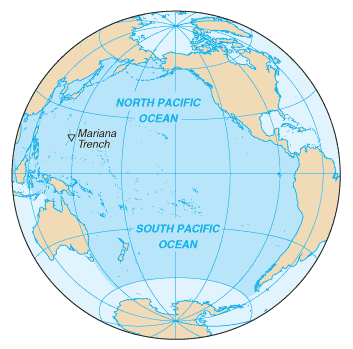Short-term spikes, long-term warming linked to tropical Pacific
 Washington, August 13 : A new analysis of ice cores has determined that dramatic year-to-year temperature swings and a century-long warming trend across West Antarctica are linked to conditions in the tropical Pacific Ocean.
Washington, August 13 : A new analysis of ice cores has determined that dramatic year-to-year temperature swings and a century-long warming trend across West Antarctica are linked to conditions in the tropical Pacific Ocean.
The analysis was conducted by scientists at the National Center for Atmospheric Research (NCAR) and the University of Washington (UW) in the US.
The findings show the connection of the world''s coldest continent to global warming, as well as to periodic events such as El Nino.
El Nino is a periodic shift in air pressure accompanied by oceanic warming in the tropical Pacific.
When a strong El Nino develops across the tropical Pacific, it can influence weather and climate as far away as the southern polar region. This occurs via a "wave train" of areas with unusually high or low pressure in the upper atmosphere that leads to warmer-than-normal temperatures in West Antarctica.
Analysis of ice cores drilled in West Antarctica reveals that air temperatures there warmed by as much as 10 degrees Fahrenheit as this three-year-long El Nino unfolded, then dropped by as much as 13 degrees F afterward.
"As the tropics warm, so too will West Antarctica," said NCAR''s David Schneider, who conducted the research with UW''s Eric Steig.
"These ice cores reveal that West Antarctica''s climate is influenced by atmospheric and oceanic changes thousands of miles to the north," he added.
Scientists previously determined that Antarctica overall probably warmed by about 0.4 degrees Fahrenheit (0.2 degrees Celsius) in the last century.
But it has not been apparent until now that low-lying West Antarctica is more responsive to global warming trends than East Antarctica, where wind patterns have largely kept out comparatively warm air.
Schneider and Steig estimate that West Antarctica warmed about 1.6 degrees F (0.9 degrees C) over the 20th century. That is slightly more than the global average of about 1.3 degrees F (0.7 degrees C).
The new set of cores analyzed by Schneider and Steig comes from a relatively snowy part of the continent. This provides enough detail for scientists to infer year-to-year temperature changes.
The data show that the Antarctic climate is highly responsive to changes in the Pacific.
For example, during a major El Nino event from 1939 to 1942, temperatures in West Antarctica rose by about 6 to 10 degrees F (3-6 degrees C), and then dropped by an estimated 9 to 13 degrees F (5-7 degrees C) over the next two years.
According to Schneider, "These results help put Antarctica''s recent climate trends into a global context."
Steig added that while the influence of tropical climate on West Antarctica climate was not unknown, "these results are the first to demonstrate that we can unambiguously detect that influence in ice core records." (ANI)